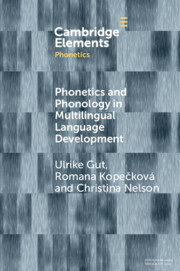Element contents
Phonetics and Phonology in Multilingual Language Development
Published online by Cambridge University Press: 26 July 2023
Summary
Keywords
Information
- Type
- Element
- Information
- Series: Elements in PhoneticsOnline ISBN: 9781108992527Publisher: Cambridge University PressPrint publication: 31 August 2023
References
Accessibility standard: Unknown
Why this information is here
This section outlines the accessibility features of this content - including support for screen readers, full keyboard navigation and high-contrast display options. This may not be relevant for you.Accessibility Information
- 5
- Cited by
